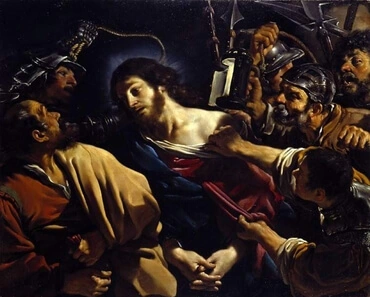Explanation of John 1:10
By Brian David

The beginning of John 1 illustrated how divine truth – which is the ultimate expression of the Lord’s love – is the actual creative force of the universe and of reality itself. That idea is reinforced here: "him" refers to Jesus, who was the physical embodiment of divine truth, which indeed made the world.
This verse offers another level, though. "World" represents the church, which is defined in the Writings as "where the Lord is known and where the Word is." By that definition a "church" can be as small as one person, or as large as billions of people worshiping through a wide variety of denominations. And the Writings tell us that the Lord has made sure that such a church always existed, from prehistoric times when the Lord offered "the Word" – His truth – to people directly up through today, when we have the Word in the form of the Bible.
But the world did not know him. At the time the Lord came among us as Jesus, people had turned away from the deeper meanings of the Word (which they then had in the form of the Old Testament), and had little to no concern for knowing the Lord. His church – the church among the Children of Israel – had turned away.
This might seem like a merely historic idea, something that happened then but has little to do with us now. But each one of us is a "church," and each one of us can know the Lord and the Word, or turn away. We all go through states when we are like the church at the time the Lord was born, and He can rebuild us now even as He rebuilt the church then. For that to happen, though, we need to turn to the Word – the Bible – and know the Lord.
(References: Apocalypse Explained 1093; Canons of the New Church 9; The Apocalypse Explained 294 [16])
Arcana Coelestia #6592
6592. 'And you shall cause my bones to go up from here' means that there will be a representative of the Church but not a Church which also exists on an internal level. This is clear from the representation of 'Joseph' as the internal of the Church, dealt with above in 6587; and since he represents the internal of the Church, that which is the most external or the outermost area of the Church, thus that which forms the representative part of it, is meant by his 'bones'. For the representative acts which existed in the Ancient Church and which were also established among the descendants of Jacob constituted outermost forms within the Church; but the things those acts meant and represented were the inner realities of the Church. These - the inner realities - are meant by 'the flesh' which holds the spirit within it; but the outer forms are meant by 'the bones'. From this one may see what the Church is like when it is concerned solely with outer forms, without their inner realities, namely like the bones forming the framework of a person's body without the flesh. As regards the fact that no Church, only a representative of the Church existed among the Israelite and Jewish people, see 4281, 4288, 4307, 4500, 4680, 4844, 4847, 4903, 6704; and a representative of the Church was not established among them until they had been completely vastated internally, or else they would have rendered holy things profane, 4289.






